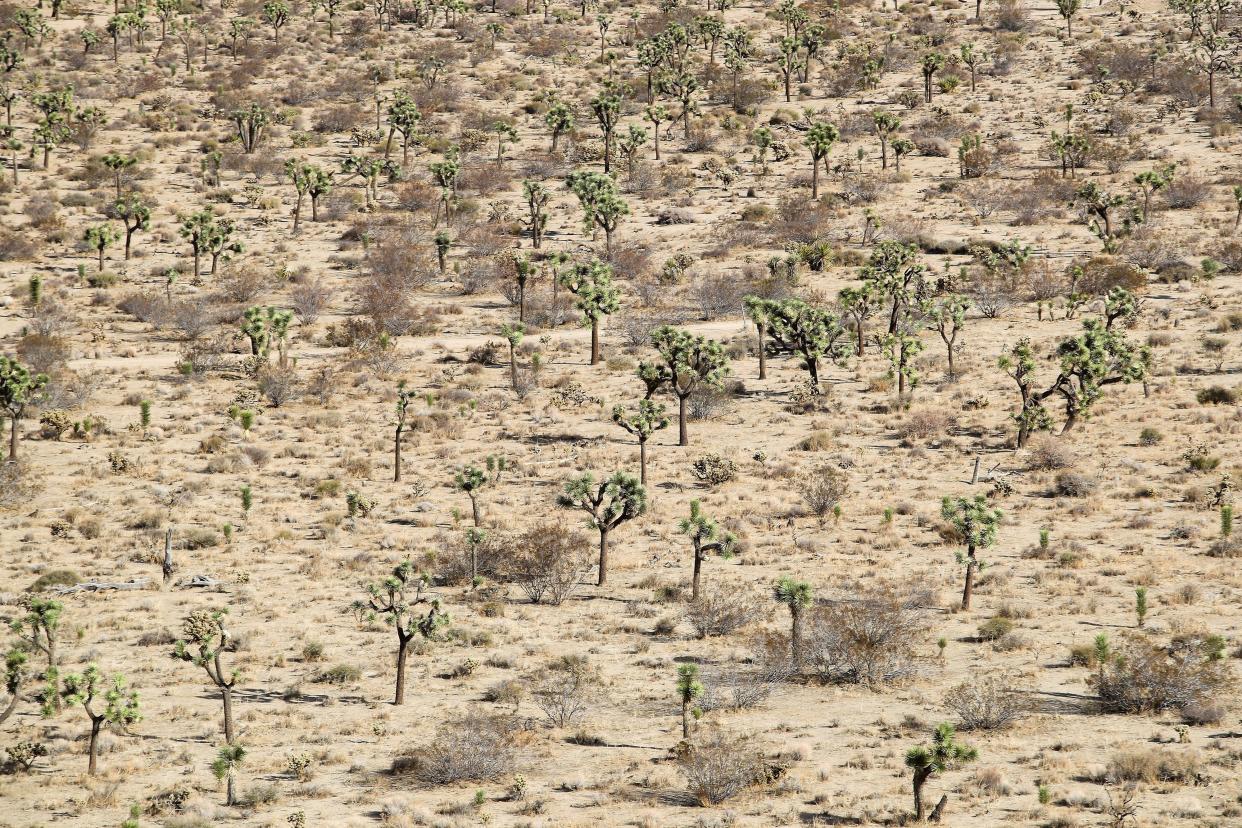Decision on listing western Joshua tree as 'threatened' species pushed to February

The California Fish and Game Commission decided Wednesday to delay their decision on whether to list the western Joshua tree as threatened under the California Endangered Species Act until February, citing the need for additional tribal consultation and deliberation time.
The commission previously considered the issue at their June meeting, but failed to reach a majority decision at that time, instead reopening public comments specifically for additional tribal input. At their Wednesday meeting, they decided to continue the decision again to their February meeting.
"The record is voluminous with hearings, public comments, scientific findings, complex models, there is a lot to catch up on (for a new commissioner). And the weight of this decision is extraordinary, and the consequences are substantial," Commission President Samantha Murray said.
At the June meeting, a motion to list the species failed after a tie vote between four commissioners, with one seat vacant at the time. That seat has since been filled by Anthony Williams, who was appointed by Gov. Gavin Newsom on Oct. 5.
Williams said during Wednesday's meeting that he hadn't had enough time yet to review the record and feel comfortable supporting a listing.
The species will maintain its status as a candidate for listing, which means it receives the same protections as a state-listed endangered or threatened species. This includes a prohibition on the import, export, take (or kill), possession, purchase, or sale of the western Joshua tree, or any part or product of the tree, without proper authorization.
If the western Joshua tree is ultimately listed, it would represent the first time the state law has been used to protect a species that is primarily threatened by climate change.
Department of Fish and Wildlife and Fish and Game Commission staff also held a tribal listening session in August about the western Joshua tree. The commission voted to keep the public record open through February for additional tribal consultation.
In addition to tribal consultation, the commission also expressed interest in alternative protections that are "CESA-equivalent," possibly through legislative action or a range-wide recovery and conservation plan, and Murray stated that she hopes such an alternative might be available to consider in February.
Species threatened by climate change
The Center for Biological Diversity submitted a petition to list the species in 2019 to protect the trees from the threats of climate change, wildfires, and development. The tree’s suitable habitat is expected to decline substantially by 2100 due to climate change, especially in the southern portions of its range — meaning the Joshua tree would largely be unable to survive in its namesake park by the end of this century.
Outside of the park, the western Joshua tree’s habitat extends northeast through fast-growing high desert cities like Victorville, Hesperia and Palmdale. High desert cities, construction and real estate trade groups, and renewable energy developers oppose the listing, arguing it would stymie development of housing and renewable energy.
Approximately 40% of the western Joshua tree’s range is on private lands, and one analysis by the U.S. Fish and Wildlife Service projected that between 22% and 42% of the habitat within the southern part of the tree’s range may be lost by 2095 due to urban growth and renewable energy development, although less than 1% of the habitat within the northern part of the tree’s range in Inyo and Kern counties is expected to be lost during that same time period.
But the department recommended against listing the tree as threatened, concluding that the “currently abundant and widespread” population lessens the overall impact of these threats and the threat of extinction for the foreseeable future, which the department defined as through 2100.
Supporters of the listing say this finding fails to acknowledge the role that climate change will have on the species.
Erin Rode covers the environment for the Desert Sun. Reach her at erin.rode@desertsun.com or on Twitter at @RodeErin.
This article originally appeared on Palm Springs Desert Sun: Western Joshua tree: California Endangered Species Act decision pushed

